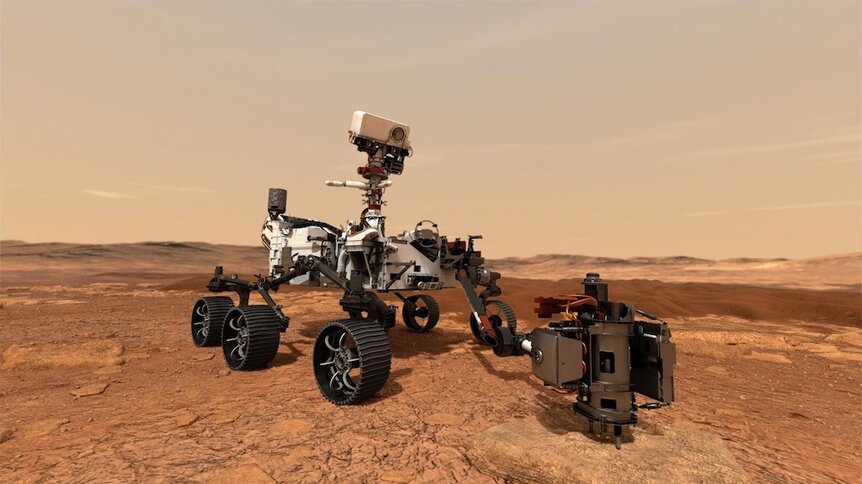Create a free profile to get unlimited access to exclusive videos, sweepstakes, and more!
NASA Just Got a Shipment of Plutonium for Next Class of Nuclear-Powered Spaceships
The right rocks can power a spacecraft for decades.
The quickest way to recognize how rad Earth is, is to leave it. Every time we send a spacecraft into space, we have to send it with everything it will ever need riding on its back or in its belly. Uncrewed spacecraft can usually travel light, having no real need for food, water, or sleeping quarters, but they do need energy. If you’re staying relatively close to home, you can rely on sunlight and large solar panel arrays for all of the safe, renewable energy you’ll ever need.
If, however, you’re planning to visit the more distant parts of our solar system, the surfaces or subsurfaces of other planets and moons, or the space between stars like the crew of The Ark (streaming now on Peacock), you’re going to need a more reliable energy source. To that end, NASA recently received a shiny new shipment of 0.5 kilograms (roughly one pound) of plutonium-238 from the United States Department of Energy (DOE).
NASA Just Accepted Delivery of Half a Kilo of Plutonium
In the early years of the new millennium, the DOE and NASA recognized a growing need for a consistent supply of radioactive material to support future spacefaring missions. The two agencies worked together to deliver a plan for the production of plutonium-238, which would serve as the radiating hearts of future spaceships.
RELATED: The Life and Eventual Death of Voyager 1 and 2
This shipment is the largest delivery since the plan was enacted and marks a milestone toward the agencies’ collective coal of 1.5 kilograms of heat source plutonium-238 every year, by 2026. Not all missions need radioactive energy supplies, but planned NASA missions are heading to places like Jupiter’s icy moons, where vast liquid water oceans could support subterranean ecosystems. One day, we might even send robots to drill through the ice and swim the alien waters beneath. In those places, far from any sunlight, our machines will need plutonium to keep them and their instruments running.
Radioactive isotopes like plutonium-238 naturally decay at a rapid, consistent, and predictable rate. In the process, they shed tons of dangerous radiation and a boatload of heat. Shielding the plutonium protects machines and any potential crew from the ionizing radiation while allowing the heat to bleed through. Some of that heat is then converted into electrical power capable of keeping a spacecraft alive in some of the most hostile environments around.
“NASA’s Radioisotope Power Systems Program works in partnership with the Department of Energy to enable missions to operate in some of the most extreme environments in our solar system and interstellar space,” said Carl Sandifer, RPS program manager, in a statement.
Already, some of the program’s plutonium is hard at work in space. The Perseverance Mars rover was the first spacecraft to benefit from the plutonium produced by the DOE. Inside Percy you’ll find 4.8 kilograms (10.6 pounds) of plutonium dioxide supplying heat and about 110 watts of electricity, enough to keep the SUV-sized robot roaming around the Red Planet. Not bad for a few kilos of hot rocks.
Catch the complete first season of The Ark, streaming now on Peacock.



































